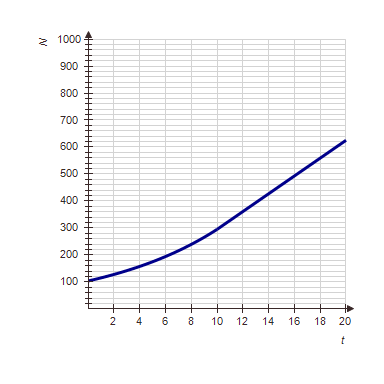Initially a city has a population of 104 thousand. Over the first 10 years the population grows exponentially at a rate of 11% per year. Over the next 10 years the population grows linearly at a rate of 33 thousand individuals per year.
?
A: Find a formula that gives the population N, in thousands, over the first 10 years.
?
B: Find a formula that describes the population from year 10 to year 20. Be careful: Year 10 corresponds to 

?
C: Find a formula for a piecewise-defined function that describes the population over the 20-year period.
?
D: Make a graph of the population over the 20-year period.
?
What will be an ideal response?

?
B:
?
C: 



?
D:
?
?
?
You might also like to view...
Evaluate the integral. dx
dx
A. x + 1 + C
+ 1 + C
B. 
C. 1 + 1 - 1
+ 1 - 1
D. 1 + 1
+ 1
Express the integrand as a sum of partial fractions and evaluate the integral.
A. 4ln + 4ln
+ 4ln + C
+ C
B. 4ln + 4ln
+ 4ln + C
+ C
C. 5ln - 4ln
- 4ln + C
+ C
D. ln + C
+ C
Refer to the following normal curve, with mean ? and standard deviation ?.
 A data value of 30 corresponds to a standardized value of
A data value of 30 corresponds to a standardized value of
A. -1. B. 1. C. -2. D. 2. E. none of these
Find the One's complement of 01101110.
a. 01100011 b. 01100000 c. 10010001 d. 0011111 e. 10011100

